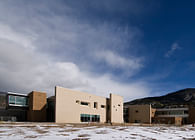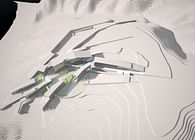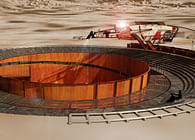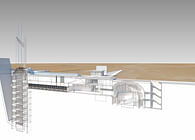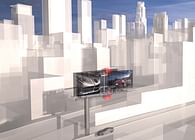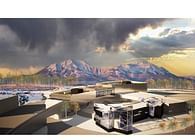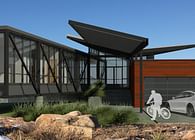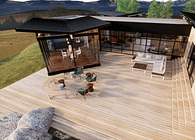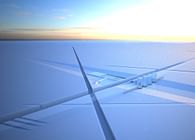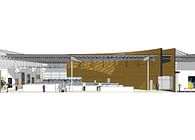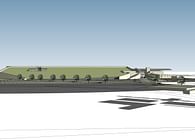
Colorado Springs, CO, US
Narrative: The Parasol Building represents new and innovative approaches to responsible design for the 21st century, and offers it’s owner and future tenants the opportunity to become participants in one of the most advanced and highly sustainable buildings within the desert Southwest.
Feeling the contemporary approach of ‘conquering and dominating nature’ inappropriate, the design team envisioned the project as a cooperation with the land itself, seeking to merge the technosphere of our creation with the biosphere of our inheritance. Rather than importing a pre-determined solution, the design takes it’s cues from the more salient qualities of both site and urban landscape, finding a resonance with it’s high Sonoran Desert setting while taking responsibility for it’s more consumptive habits.
Inspired by the shade canopy of the native ‘velvet’ mesquite tree, the project features a graceful photo- voltaic canopy that not only shades the building, but also creates it’s own renewable energy source. Raised above it’s native desert floor, the building literally ‘touches the ground’ lightly, maximizing the available natural habitat while affording it’s inhabitants expansive views of the greater Tucson valley.
The building is 92% self-shading, and is constructed of high- performance materials that not only reduce energy consumption, but can also withstand the harsh desert environment with a minimum of long-term maintenance.
Situated on a long and narrow ‘aircraft carrier’ site, the building straddles the hillside of a local wash in the Tucson Valley of Arizona. Composed of two bridge structures, the building literally steps lightly upon the site by cantilevering the bridge structures upon pylons and a minimal concrete base. A steel canopy holds an array of photovoltaics while shading a majority of the building.
Borrowing it’s construction delivery techniques from industrial and automotive design, the project’s major elements are designed as a series of components that are manufactured under rigorous factory conditions and assembled on-site.
Results: This design and it’s available process can afford lower initial construction cost and time per building classification (Class A Medical), lower construction waste, lower maintenance cost, lower energy consumption, greater floor area efficiency, lower overall footprint and site disturbance, and is predominantly US-sourced in all it’s materials.
Sources and Calculation Criteria Used: LEED/U.S. Green Building Council, U.S. Dept. of Energy, Whole Building Design Guide, Trane Trace-700 Energy Platform.
Status: Built
Location: Tucson, AZ, US
My Role: Principal in Charge, Project Architect, Project Manager


